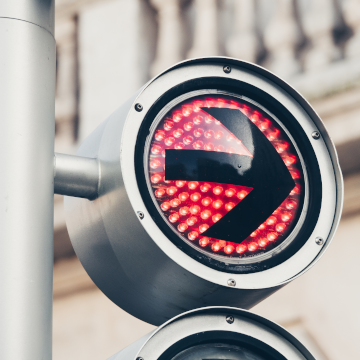🚀 Introduction: Smarter Testing for Smarter Trading
Backtesting is a cornerstone of strategy development in trading. It’s how traders and analysts evaluate the potential performance of a trading strategy using historical data. But traditional backtesting has limitations – it assumes market conditions are static, ignores evolving behavior, and often can’t account for non-linear relationships between assets and events.
Enter AI back testing It brings machine learning and automation into the mix, providing traders with deeper insight, better adaptability, and smarter strategy refinement. In this post, we’ll break down exactly what AI backtesting is, how it works, and why it’s a game-changer for algorithmic and discretionary traders alike.
🧠 What Is Backtesting?
Before we dig into the AI side, let’s get clear on what AI back testing is in general.
AI back testing (Traditional) = Strategy + Historical Data
It’s the process of simulating how a trading strategy would have performed in the past using historical market data. You run your rules (buy/sell signals, entry/exit criteria) on past charts and calculate:
- Win rate
- Average return
- Risk-to-reward ratio
- Drawdown
- Sharpe ratio
- Profit factor
This gives you a baseline for whether a strategy is promising – or garbage.
🤖 What Makes AI back testing Different?
AI backtesting does more than simulate trades. It uses machine learning, pattern recognition, and statistical inference to build, adapt, and optimize strategies based on how markets behave over time – not just plug-and-play rules.
Key Differences:
| Traditional Backtesting | AI back testing |
| Fixed rules | Adaptive, learns from data |
| Manual parameter tuning | Auto-optimization with ML algorithms |
| Assumes linear relationships | Models complex, non-linear interactions |
| Based on historical static logic | Can adjust based on pattern evolution |
In other words, AI doesn’t just test what you give it – it figures out better ways to trade.
🔍 Core Components of AI back testing
Let’s unpack the key building blocks of an AI-powered backtesting system.
Forex Gold Investor targets predictable price movements in gold using automated trading strategies backed by years of performance data.
1. Historical Market Data
No data, no testing. AI systems need access to structured historical data:
- OHLCV (open, high, low, close, volume)
- Order book data (for high-frequency models)
- Economic indicators
- News sentiment
- Social media signals
Quality and cleanliness of data are crucial – garbage in, garbage out.
2. Feature Engineering
AI doesn’t just look at raw prices. It extracts features like:
- Technical indicators (RSI, MACD, Bollinger Bands)
- Momentum and volatility measures
- Pattern sequences (e.g. triple tops)
- External data (e.g. earnings reports, macro news)
This turns simple charts into rich, multidimensional data sets.
3. Machine Learning Models
AI backtesting uses models to detect and learn trading patterns. Common choices include:
- Decision Trees / Random Forests
- Gradient Boosting (XGBoost, LightGBM)
- Neural Networks / Deep Learning
- Reinforcement Learning
- Clustering (K-Means, DBSCAN)
Each model has strengths:
- Supervised models learn from labeled trades (win/loss)
- Unsupervised models identify hidden patterns
- Reinforcement learning learns from continuous reward/punishment feedback
4. Backtesting Engine
This is the simulation engine – where trades are virtually placed and evaluated.
It must simulate:
- Entry and exit logic
- Slippage and transaction costs
- Order execution delays
- Capital allocation and margin
- Stop-loss and take-profit rules
AI-enhanced engines also dynamically adjust the strategy based on feedback, not just static inputs.
5. Optimization & Learning Loop
AI systems iterate automatically. They:
- Try a strategy (based on a model)
- Measure results
- Learn from the outcome
- Tweak the strategy
- Repeat until performance improves
This feedback loop helps discover unexpected edge cases, patterns, or optimal parameter combos you wouldn’t think to try manually.
Options Pop gives you 3 weekly trade alerts powered by AI trading models-perfect for quick 2-9 day opportunities with precise entries.
📊 How AI back testing Works: Step-by-Step
Let’s walk through a basic AI backtesting workflow:
Step 1: Data Collection & Preprocessing
- Pull historical price data (from APIs or CSVs)
- Clean missing or corrupted data
- Generate technical indicators
- Normalize inputs for ML
Step 2: Define Objective
- Predict price direction?
- Maximize profit with low drawdown?
- Minimize volatility?
Your model needs a goal – often encoded as a reward function or performance metric.
Step 3: Train the Model
- Feed labeled data to supervised ML model (e.g., 1 for profit, 0 for loss)
- Validate on a separate data set
- Adjust hyperparameters for accuracy
Step 4: Simulate Trades (Backtest)
- Deploy the model to make simulated trades
- Log each trade’s entry, exit, PnL, and drawdown
- Measure key stats (Sharpe, Win%, MDD, etc.)
Step 5: Optimize
- Use AI to tweak parameters:
- Holding period
- Indicator thresholds
- Position sizing rules
- Rerun simulations
- Repeat until strategy performance stabilizes or improves
Trade Smarter, Win Faster – VIP Indicators Delivers Precision Signals Daily
Step 6: Walk-Forward Testing
To avoid overfitting, apply the model to unseen forward data (not used in training) to test real-world robustness.
🧪 Example Use Case: AI Predicts Momentum-Based Entries
Imagine using a gradient boosting model (like XGBoost) trained on:
- RSI and MACD crossovers
- 3-day volume spikes
- S&P 500 correlation
- Twitter sentiment on the ticker
The model learns when these signals historically preceded upward movement.
Your backtesting engine:
- Uses this model to place trades from 2015 to 2023
- Measures how well it performs vs. a buy-and-hold strategy
- Optimizes holding time and position sizing to reduce drawdown
⚖️ Pros of AI back testing
✅ Adaptability – AI strategies can evolve with market conditions
✅ Pattern discovery – Finds signals humans might miss
✅ Faster optimization – Automates what would take weeks manually
✅ Multi-factor analysis – Uses hundreds of data inputs simultaneously
✅ Backtest realism – Can model behavior more like a real market
⚠️ Cons & Risks
❌ Black Box Models – Some AI models (especially neural nets) lack transparency
❌ Overfitting – AI can learn to “cheat” on the test data
❌ Data Dependency – Bad or biased data leads to poor models
❌ Complexity – Not beginner-friendly without some coding/statistics knowledge
❌ Slower Execution – Heavy ML models can lag in real-time trading if not optimized
🔧 Tools for AI back testing
Want to try it yourself? Here are some great platforms and frameworks:
🧠 Python Libraries:
- Backtrader – flexible Python backtesting engine (can plug in ML models)
- QuantConnect – cloud-based backtesting + ML integration (C#/Python)
- bt – strategy testing in Python using pandas
- PyTorch / TensorFlow – for building your own AI models
💼 Platforms:
- Tuned – visual AI model builder for crypto trading
- Tradestation with EasyLanguage + AI plugins
- MetaTrader 5 with MQL5 and AI EAs
📏 What to Measure During AI Backtesting
A good AI backtest doesn’t just look at total return – it needs to be multi-dimensional:
- 📈 Cumulative Return
- 📉 Max Drawdown
- 📊 Sharpe / Sortino Ratios
- 🧘 Win Rate & Risk/Reward Ratio
- 🔁 Trade Frequency & Holding Time
- 🔥 Tail-Risk Exposure (CVaR, Skewness, Kurtosis)
🔮 The Future of AI Backtesting
As data gets more granular and compute power keeps growing, expect backtesting to become:
- Real-time and adaptive – models retrain on the fly
- Context-aware – understands news, tweets, macro events
- Personalized – tailors strategies to user risk profiles
- Multi-agent – models multiple competing AIs in the market
- Decentralized – runs on blockchain or edge networks for transparency
Eventually, the line between backtesting and live execution will blur – with AI systems constantly learning and adjusting live trades based on feedback loops.
✅ Conclusion: Smarter Testing, Smarter Trading
AI back testing is a powerful evolution in strategy development. Instead of simply replaying old trades, it lets you simulate, learn, and optimize across complex conditions and behaviors. For traders willing to embrace it, AI offers an edge that’s data-driven, adaptive, and forward-looking.
But like any tool, it needs to be used wisely. Combine AI’s power with human oversight, clear objectives, and proper validation – and you’ll build trading systems that aren’t just theoretically profitable, but truly robust.







Leave a Reply